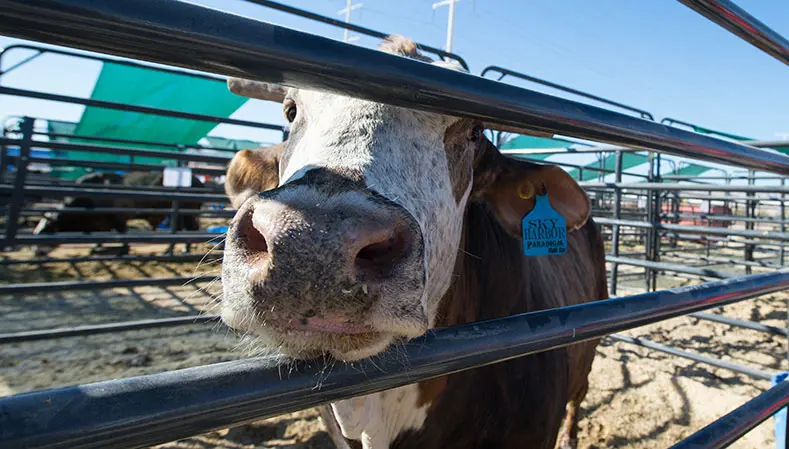
PUEBLO, Colo. – In bull riding, while much of the attention is on the rider, the bulls are what truly make the sport go. Nothing would be able to happen without bovine athletes.
As such a critical part of the sport, bulls are treated with as much care as any other elite athlete, with strict guidelines and regulations put in place to ensure their wellbeing, and dedicated stock contractors making sure their lives are as healthy and comfortable as possible.
Want to learn more about the life of a bucking bull? You’re in luck. Read on for seven key facts you need to know, and check out the PBR’s YouTube channel for much, much more.
1. Bulls are bred to buck.
“You can’t force a bull to do anything he don’t want to do,” said stock contractor Kenny McElroy.
Bulls are not forced to buck. Rather, the inclination to do so is what they’re specifically bred for. Today’s best bucking bulls come from generations of bloodlines that give them their talent, athleticism and desire to buck. If a bull doesn’t have that ability, nothing is going to force it out of him.
2. The flank strap does not harm the bull in any way.
Don’t believe the myth that bulls have their testicles tied up, because nothing could be farther from the truth.
“Here’s what you need to do,” said nine-time Stock Contractor of the Year Chad Berger. “Take a rope, tie it around yours, and pull it up tight, and see how high you can jump. You’ll be laying on the ground, just like that bull would.”
The flank is simply there as a foreign object to encourage bulls to kick a little bit higher, and it is tied only tight enough to not fall off.
3. Nor do bull riders’ bull ropes.
Judges keep a sharp eye on how tight a bull rider is pulling his rope, and there are restrictions on how many hands can be on a rope at one time.
“If the bull’s showing any kind of signs of it hurting him or whatever, the judges are right there to put the guy on the clock or tell them only three hands,” said stock contractor Jeremy Walker.
It’s a system that ensures each bull gets roughly the same amount of tension applied, and never too much of it.
4. Bulls are treated to a nice, easy retirement at the end of their careers.
While some of the great bulls can have a career spanning 10 or 12 years, the majority of bucking bulls will be active for around eight years, according to stock contractor J.W. Hart. And when they can no longer buck at the elite level, life stays good. “Probably 95% of the bulls that get retired, they go into I guess the retirement program,” Hart said. “At our ranch, we turn them out, and if we like their breeding and their pedigrees well enough, we’ll start breeding to them. And they just get turned out on calves, and live the simple life with the ladies.”
5. It’s extremely rare that a bull gets hurt in competition.
“My son plays football, and I will say this,” said stock contractor Matt Scharping. “Bulls get hurt way less than football players do.”
While there is the occasional injury, it’s rare enough that bulls are still able to buck at the elite level as 9- and 10-year-olds. When bulls are injured, they receive the best care possible, with every course of action taken to preserve the life of a bovine athlete.
6. Bulls are treated as well as – or better than – any human.
Bulls live on spacious ranches throughout the country, and even during transportation are ensured plenty of space and time to stretch their legs. They have shavings in their pens, and will often lay down as they travel to their next event.
“Sometimes I joke about it, but we take better care of those guys than sometimes we do our kids, I think at times,” said stock contractor LeAnn Hart, “because we want them to feel the best. They’re the ones that have to perform.”
7. At no point have PBR bulls been mistreated.
A bull ride is an equation that takes two variables: the bull rider, and the bull. The sport would not be possible without top-notch, well-treated animal athletes, and no bulls are ever mistreated.
“It’s not tolerated in the PBR,” Berger said simply. “If you were doing something wrong to you animals, you just wouldn’t be welcomed back.”